Garur Peak Ideal 6000m Climb for Beginner Mountaineers
Hidden in the remote Garhwal Himalayas of Uttarakhand, India, Garur Peak—also known as Garuda Peak—stands tall at an impressive height of 6,000 meters. Located above the upper Bagini Glacier, this majestic mountain lies in a secret valley right beside the Icicle Valley. The trek gets its name “Hidden Valley” because after you catch the first glimpse of Garur Peak from Dronagiri Village, the mountain disappears from view until you reach Camp 1.
Garur Peak is not as well-known as its neighboring peaks like Changabang (6,864 m), Saf Minal (6,911 m), and Dronagiri (7,066 m), but that’s what makes it special. It’s an ideal expedition for beginner mountaineers who are looking for their first 6,000-meter summit. The route offers a mix of adventure, natural beauty, and cultural experience—without the heavy traffic of more popular climbs.
The 11-day journey begins from Rishikesh, on the sacred banks of the Ganges River. From there, you’ll travel through charming villages, dense forests, and beautiful alpine meadows, eventually reaching the icy terrain of the Bagini Glacier. The final ascent to the summit challenges your physical strength and determination but rewards you with stunning views and a deep sense of achievement.
Whether you’re a first-time climber aiming to go beyond 5,000 meters or an experienced trekker looking for a quieter, scenic expedition—Garur Peak is a great choice. Join us for this unforgettable Himalayan adventure in one of the most peaceful and untouched regions of Uttarakhand.
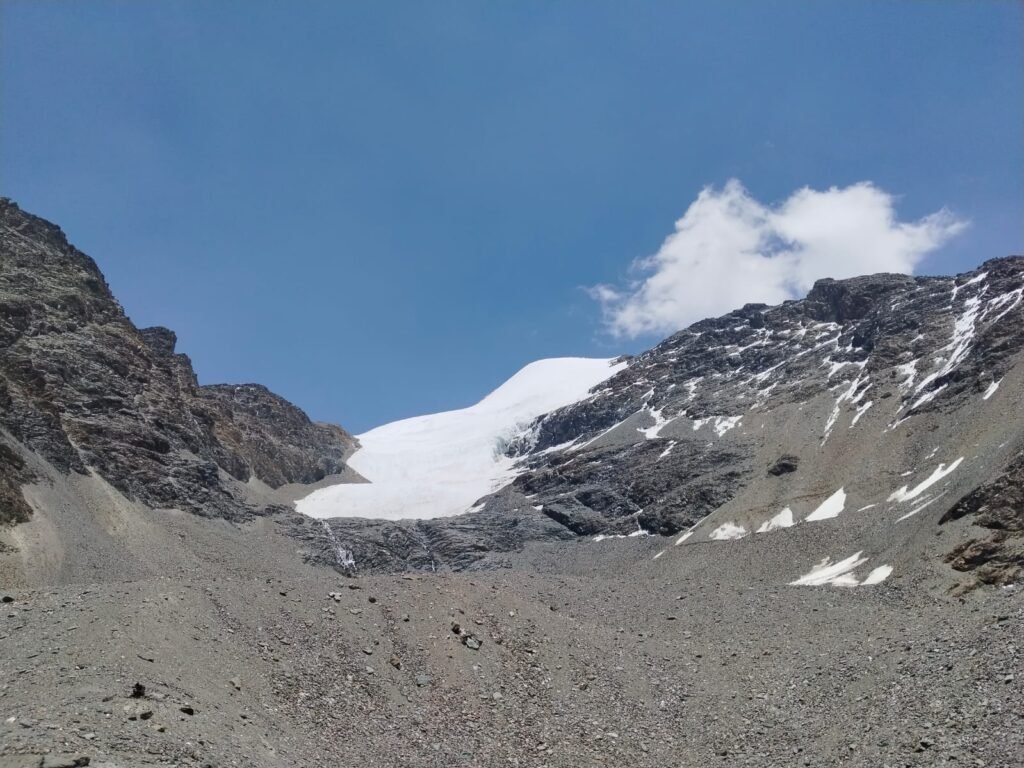

Why Choose Garur Peak?
1. Untouched Natural Beauty:
Garur Peak is perfect for those who want a peaceful adventure. Unlike crowded trekking trails, this route remains quiet and clean. You’ll walk through stunning landscapes with very few other trekkers around.
2. Real Local Experience:
The journey takes you through traditional Garhwali villages like Ruing and Dronagiri. You’ll get a chance to meet the friendly locals, try homemade food, and learn about their culture, lifestyle, and ancient customs. It’s a great way to connect with the Himalayan way of life.
3. Safe and Steady Climb:
The expedition is carefully planned with slow and steady progress. There are special days for rest and altitude adjustment (acclimatization), as well as basic technical training. This helps beginners adapt to the high altitude safely and comfortably.
4. Breathtaking Mountain Views:
Once you reach the summit of Garur Peak, you’ll be rewarded with a 360-degree view of the mighty Garhwal Himalayas. Peaks like Changabang (6,864 m), Rishi Pahar (6,992 m), and many others stretch out before you—making all your hard work worth it.
Garur Peak is a rare chance to enjoy adventure, nature, and culture—all in one unforgettable expedition.
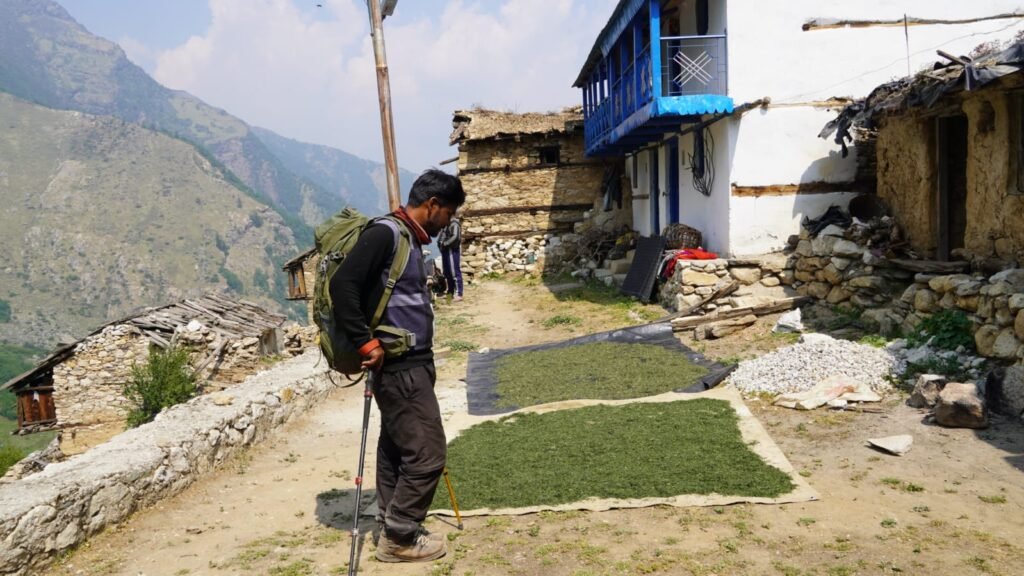
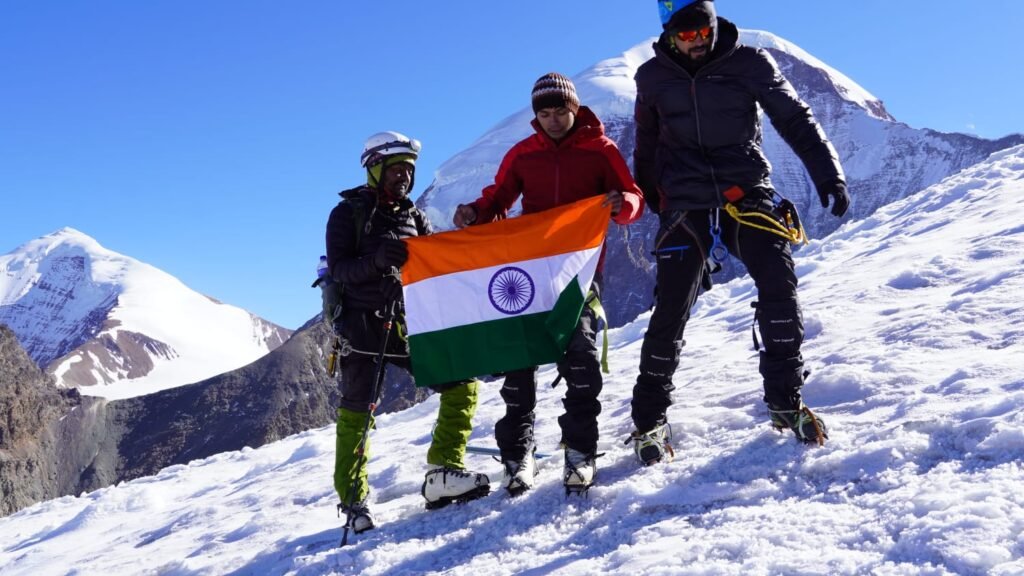
Best Time to Climb Garur Peak
The best time to climb Garur Peak is from late May to October. During these months, the weather is more stable, and the trekking trails are mostly clear of snow. This makes the climb safer and more enjoyable, especially for beginner mountaineers.
The early season—from May to June—is a beautiful time to visit. The forests and meadows come alive with blooming rhododendrons and other mountain flowers. The weather is cool, and the landscapes are lush and colorful. It’s a perfect time for those who enjoy nature and photography.
The post-monsoon season—from September to October—is also an excellent time for the expedition. After the rains, the air becomes clear and fresh. The sky stays mostly blue, offering stunning, wide-open views of the surrounding peaks. You’ll get the best chance to see mountains like Changabang, Dronagiri, and Rishi Pahar in full glory.
Avoid the monsoon months (July and August), as the trails can be slippery and risky due to heavy rain and landslides.
So, whether you prefer colorful meadows or crystal-clear mountain views, both early summer and autumn offer the perfect conditions for a safe and memorable Garur Peak expedition.
Getting There
- Nearest Railway Head: Rishikesh (accessible via Haridwar junction by train)
- By Road: A scenic drive from Rishikesh to Joshimath covers approximately 260 kilometres, winding through lush valleys, terraced fields, and quaint hill towns.
- Permits: Obtain necessary climbing permits from the Indian Mountaineering Foundation and Local Trekking Association and Forest office Joshimath

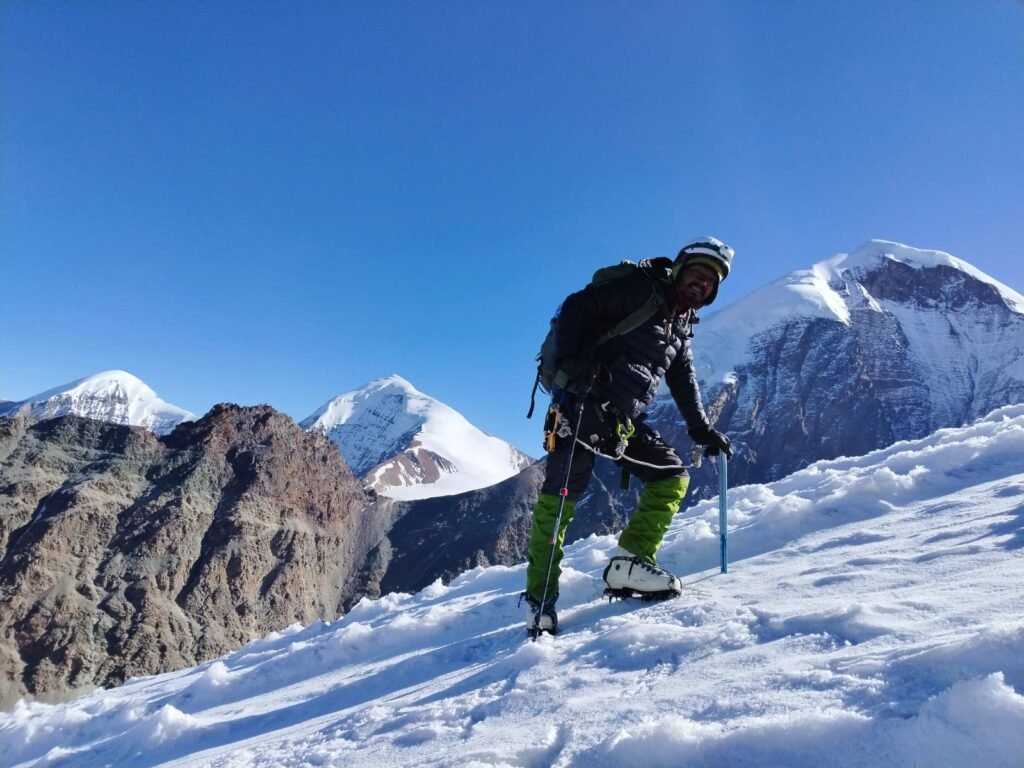
Day-by-Day Narrative
Day 1: Arrival in Joshimath (1,890m)
Your Himalayan Expedition begins with an early-morning pick-up from the spiritual town of Rishikesh. The 260-kilometer drive to Joshimath unfolds over 6–7 hours, tracing the Ganges upstream through verdant valleys, terraced fields, and winding ghat roads. As you ascend, the air grows crisp, and the first glimpses of snow-capped peaks emerge on the horizon.
Upon arrival in Joshimath—an ancient pilgrimage town guarded by the Nanda Devi and peaks around—you’ll settle into a comfortable guesthouse or hotel. Evening Snacks, our expert guide will conduct a comprehensive briefing: expedition objectives, route details, high-altitude safety protocols, and environmental guidelines. Final gear checks ensure everyone is equipped for the challenges ahead. A festive welcome dinner introduces Garhwali flavours—garhwali kafuli (spinach and gram flour curry), mandua roti (finger millet flatbread), and local cheeses.
Overnight: Hotel in Joshimath, 1,890m.
Day 2: Acclimatization Drive to Ruing Village (2,800m)
After a nourishing Lunch, we’ll drive along undulating mountain roads to Ruing Village (2,800m) over two hours. Ruing is a tucked-away hamlet with traditional wooden houses, terraced fields, and smiling villagers who rely on sheep herding and subsistence farming.
On arrival, ease into the altitude with a short orientation trek around the village. As you walk, notice rhododendron forests bursting with colour (season dependent), and listen for the melodic calls of Himalayan birds. This gentle hike not only aids acclimatization but also acquaints you with your surroundings. Engage with villagers to learn about their customs, farming methods, and folklore. Return in the evening to a hearty traditional meal served in a local homestay or camp kitchen.
Overnight: Tents or Homestay, Ruing Village, 2,800m.
Day 3: Trek to Dronagiri Village (3,690m)
Day three’s ascent unfolds over 5–6 hours through dense pine and oak forests, eventually breaking into open alpine meadows dotted with wildflowers in summer. Each turn reveals ever-expanding views: the imposing ridge of Safminal peak looms to the northeast, while Rishi Peak crowns the distant skyline.
By midday, reach Dronagiri Village (3,690m), perched on a natural of snow-fed streams and meadows. Here, local guides share stories of ancient pilgrimages and yak caravans. After pitching tents or settling into homestays, you’ll collect water from glacial streams and help prepare dinner with the team—a true Himalayan community experience.
Overnight: Tents or Homestay, Dronagiri Village, 3,690m.
Day 4: Trek to Bagini Glacier Base Camp (4,210m)
A balanced mix of challenge and reward awaits as the trail leaves cultivated land behind, entering rugged moraine and rocky outcrops. Traverse a series of narrow ridgelines before descending briefly onto the moraine tongue of the Bagini Glacier.
Base Camp (4,210m) sits at the glacier’s edge. From here, your first close-up view of Changabang’s north face and Rishi Pahar’s fluted ridges is nothing short of awe-inspiring. Spend the afternoon resting, hydrating, and scouting the route with your guide.
Overnight: Tents at Bagini Glacier Base Camp, 4,210m.
Day 5: Acclimatization Trek to Rishi Kund (4,800m)
Today’s outing is vital for high-altitude adaptation. After a pre-dawn breakfast, embark on a 3–4 hour hike to the crystalline Rishi Kund—a secluded glacial lake nestled beneath towering seracs. The lake’s turquoise waters mirror the surrounding peaks, providing a surreal backdrop for photos and reflection.
Pause at the lake’s edge, breathe deeply, and enjoy warm soup before returning to Base Camp. This rest of the day allows your body to adjust, replenishing energy stores in preparation for technical training.
Overnight: Tents at Base Camp, 4,210m.

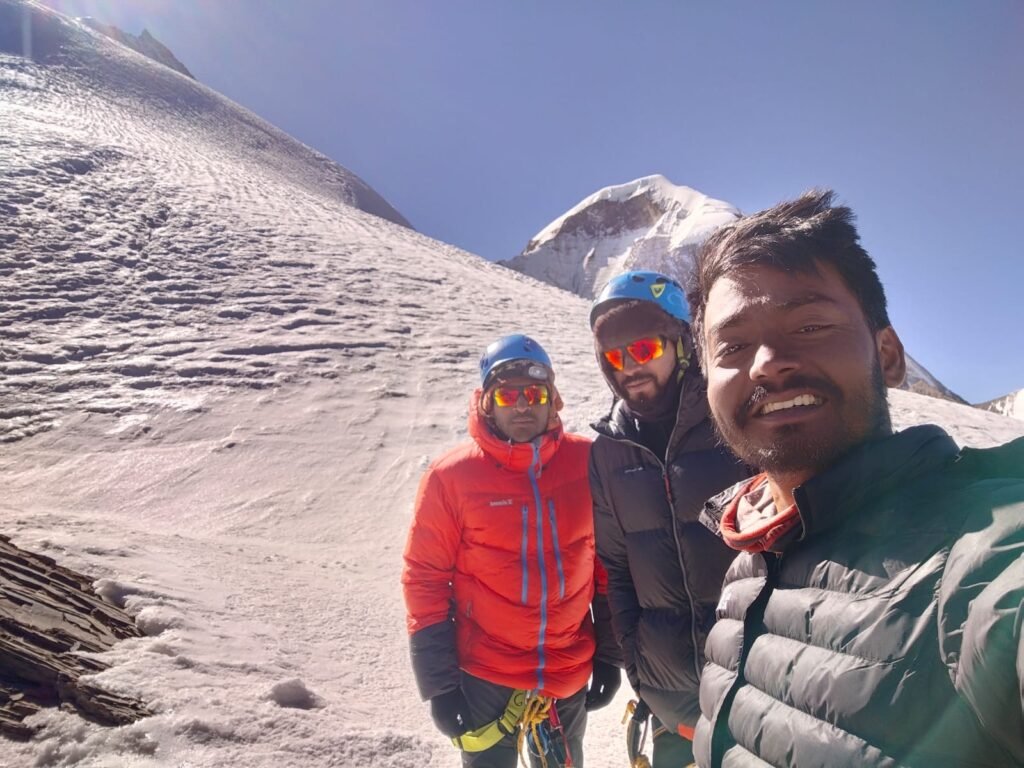
Day 6: Technical Training & Rest Day
A well-deserved rest, this day focuses on mountaineering basics: crampon work on ice, fixed-rope ascents, and crevasse rescue drills—led by certified instructors. Evening discussions cover weather forecasting at altitude, risk management, and team coordination. Ensure gear is in prime condition before the push upwards.
Overnight: Tents at Base Camp, 4,210m.
Day 7: Trek to Camp 1 (5,300m)
After breakfast, depart Base Camp for Camp 1. The route ascends steep snowfields and glacier ramps. By mid-afternoon, reach Camp 1, perched on a high shoulder with commanding views.
Camp life here is spartan: one layer of tent insulation, high-calorie freeze-dried meals, and a shared camaraderie as you glimpse the summit ridge above.
Overnight: Tents at Camp 1, 5,300m.
Day 8: Summit Attempt & Return to Base Camp
At 2:00 AM, under a star-studded sky, begin the summit push. Headlamps cut through the dark as you climb fixed lines up the steep final ridge. The air thins, breaths shorten, but the promise of the summit drives each step.
By sunrise (around 7:00 AM), stand atop Garur Peak (6,000m). The 360-degree panorama unfolds: Changabang’s serrated ridges to the northeast, the vast Nanda Devi Sanctuary to the west, and the endless sequence of Himalayan giants stretching beyond.
After savouring the moment and hydration, descend carefully back to Camp 1 and onward to Base Camp. Celebrate with warm tea and a shared sense of achievement.
Overnight: Tents at Base Camp, 4,210m.
Day 9: Descent to Dronagiri Village (3,690m)
A day of retreat as you trace your steps downhill. Cooler temperatures and lighter packs make for easier walking. Pause at familiar meadows and cross streams once more. Arrive in Dronagiri by afternoon and enjoy a celebratory meal in the village.
Overnight: Tents or Homestay, Dronagiri Village, 3,690m.
Day 10: Trek to Ruing Village & Drive to Joshimath
The final trek day covers 3–4 hours from Dronagiri to Ruing Village. Breathe in the mountain air one last time as the trail winds through rhododendron and juniper forests. Upon reaching Ruing, a short drive returns you to Joshimath. A warm shower, cozy bed, and traditional Kumaoni feast await.
Overnight: Hotel in Joshimath, 1,890m.
Day 11: Return to Rishikesh
After breakfast, depart Joshimath for Rishikesh. The 6–7-hour drive offers last glimpses of snow-capped peaks receding into the distance. Arrive by early evening, marking the end of an unforgettable Himalayan journey.
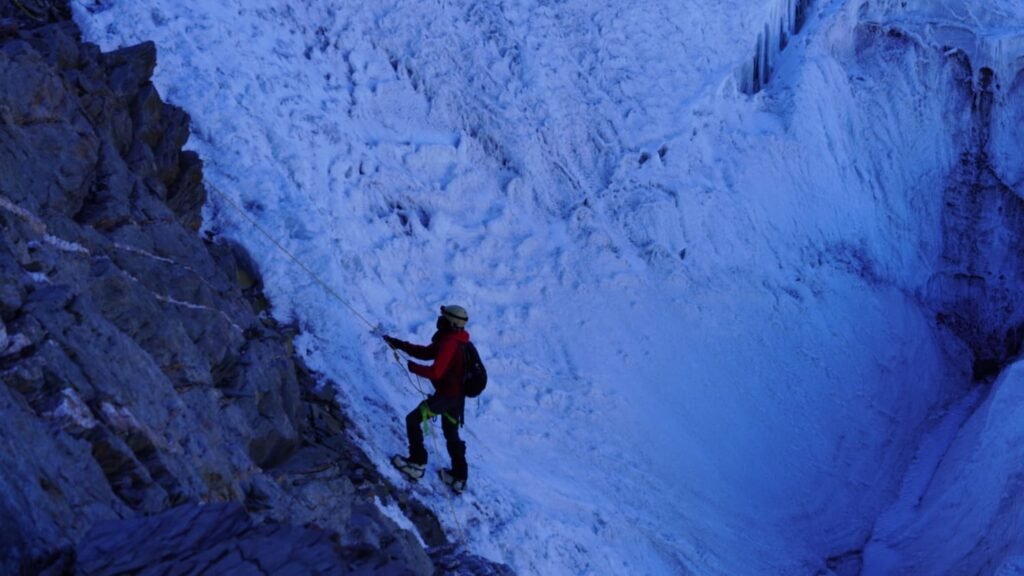
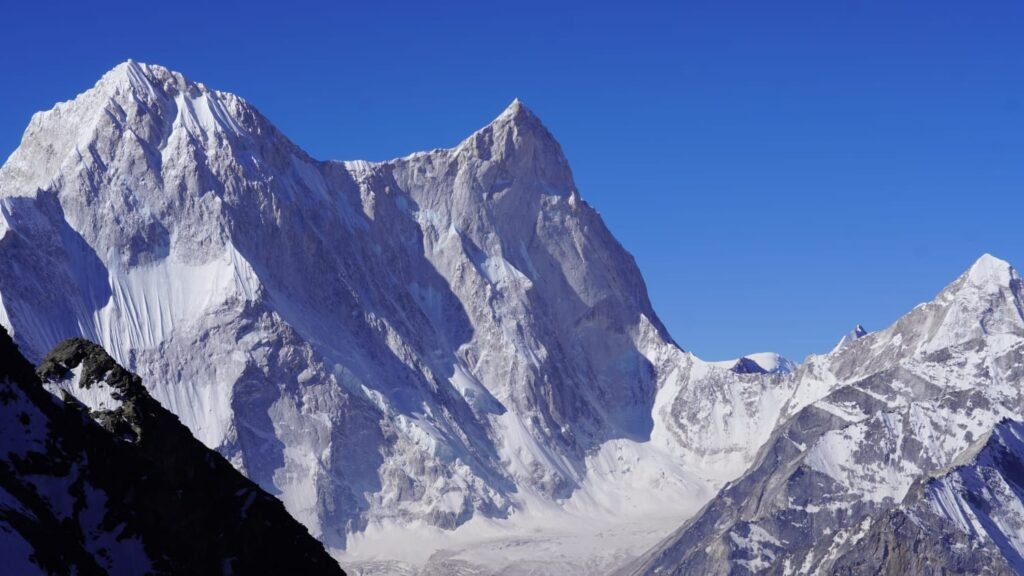
Essential Packing List
- Clothing: Moisture-wicking base layers, fleece jackets, down jacket, waterproof shell, insulated gloves, wool socks, trekking pants.
- Footwear: Sturdy trekking boots, gaiters, camp shoes.
- Technical Gear: Climbing harness, crampons, ice axe, helmet, carabiners, ascenders.
- Camping Kit: Four-season tent, sleeping bag (-20°C rating), sleeping pad.
- Miscellaneous: Headlamp, trekking poles, water bottles, filter/purification tablets, sunscreen, sunglasses (UV protection), personal first-aid kit.
- Documents: ID proof, permits, insurance, emergency contacts.
Health & Safety Guidelines
- Hydration: Drink at least 2–3 liters of water daily.
- Nutrition: Consume high-calorie meals and energy snacks to maintain strength.
- Acclimatization: Adhere to the itinerary’s rest days; never skip acclimatization.
- Weather Awareness: Check daily forecasts; heed guide advice on summit windows.
- Group Dynamics: Stay together; communicate symptoms of AMS (headache, nausea, dizziness).
- Environmental Care: Pack out all waste; follow Leave No Trace principles.
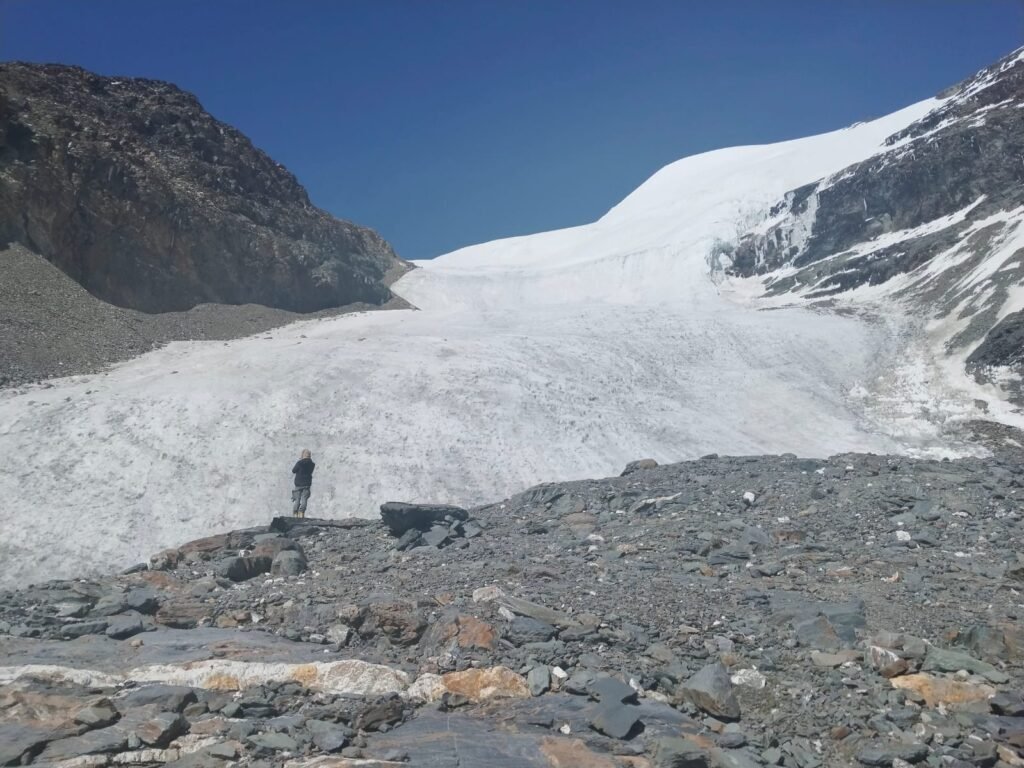
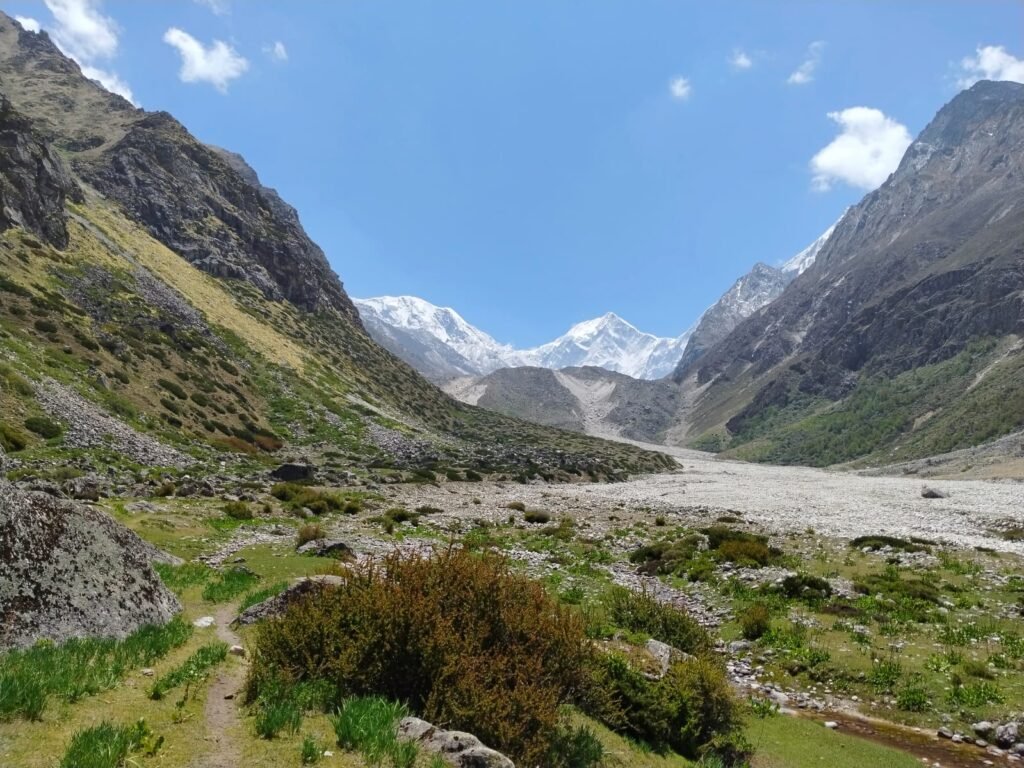
Conclusion
Climbing Garur Peak is not just about reaching the top of a mountain—it’s a complete journey into the heart of the Himalayas. Along the way, you’ll walk through untouched natural beauty, experience the simple and warm lifestyle of mountain villages, and challenge yourself in a new and exciting way.
This expedition gives you more than just adventure. It connects you to the peaceful surroundings of the Garhwal Himalayas, where snow-covered peaks, alpine meadows, and quiet glaciers create a magical setting. The local culture, traditions, and hospitality make the experience even more special.
For beginner mountaineers, Garur Peak is an excellent first summit above 6,000 meters. And for experienced trekkers, it offers a quieter, less crowded alternative to more famous peaks. The climb is tough but rewarding, and each step takes you closer to discovering your strength and confidence.
By the end of the journey, you won’t just have memories—you’ll have a deep sense of achievement. The beauty of the mountains, the friendships built along the way, and the thrill of standing on the summit will stay with you long after the snow melts.
Garur Peak is truly a hidden gem worth exploring

Leave a Reply